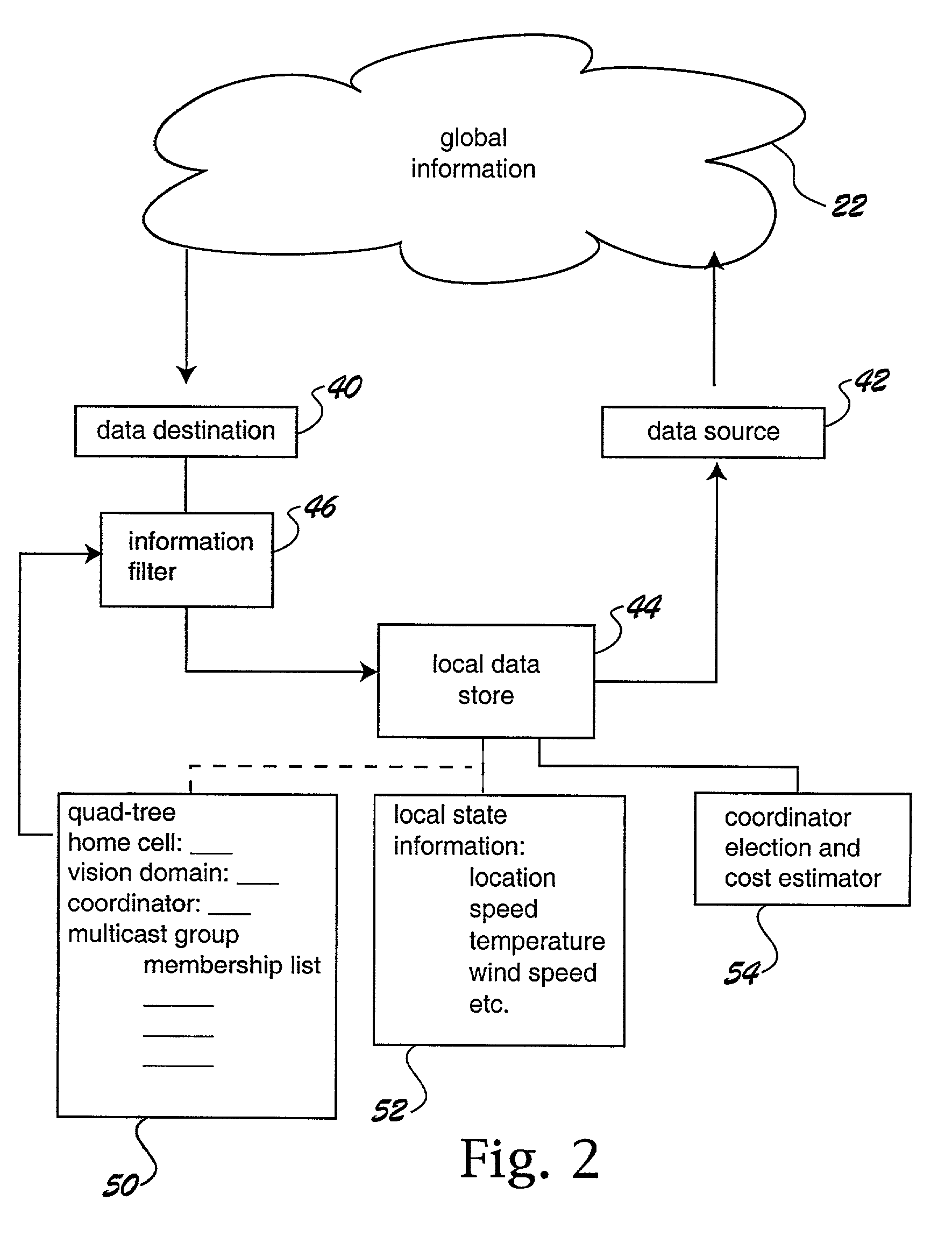Dynamic multicast grouping for vehicles and other mobile objects
a multicast grouping and vehicle technology, applied in the field of distributed information systems, can solve the problems processing resources required by the central server, the central server soon becomes a bottleneck, and the scaling problem, so as to increase the processing resources consumed by each user's onboard computer, the effect of increasing the network bandwidth requirements
- Summary
- Abstract
- Description
- Claims
- Application Information
AI Technical Summary
Benefits of technology
Problems solved by technology
Method used
Image
Examples
Embodiment Construction
[0019]The dynamic multicast grouping algorithm of the present invention has many uses. To teach the principles of the invention, a distributed traffic condition discovery application is illustrated in FIG. 1. Mobile entities move about within a geographic area and communicate traffic conditions among one another by joining various multicast groups that are each associated with a region or cell within the geographic area. Although the mobile entities may be automotive vehicles, it should be apparent that the principles of the invention can readily be applied to other types of mobile entities, such as aircraft, pedestrians, and even packages or goods in transit. Furthermore, while the distributed traffic condition discovery application has been illustrated here, the invention is capable of a wide range of other uses. Another example of such a use is the intelligent cooperative transportation system, in which vehicles cooperate with other vehicles to deliver other merchandise to the pr...
PUM
 Login to View More
Login to View More Abstract
Description
Claims
Application Information
 Login to View More
Login to View More - R&D
- Intellectual Property
- Life Sciences
- Materials
- Tech Scout
- Unparalleled Data Quality
- Higher Quality Content
- 60% Fewer Hallucinations
Browse by: Latest US Patents, China's latest patents, Technical Efficacy Thesaurus, Application Domain, Technology Topic, Popular Technical Reports.
© 2025 PatSnap. All rights reserved.Legal|Privacy policy|Modern Slavery Act Transparency Statement|Sitemap|About US| Contact US: help@patsnap.com



